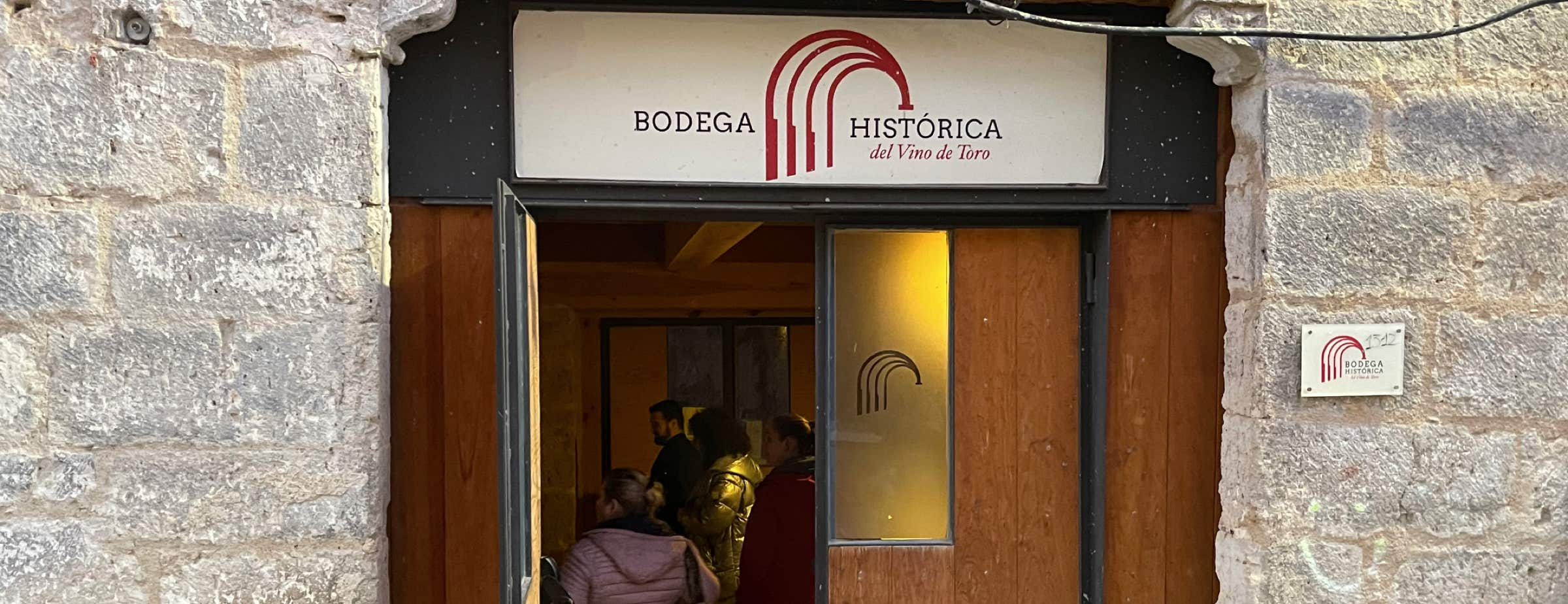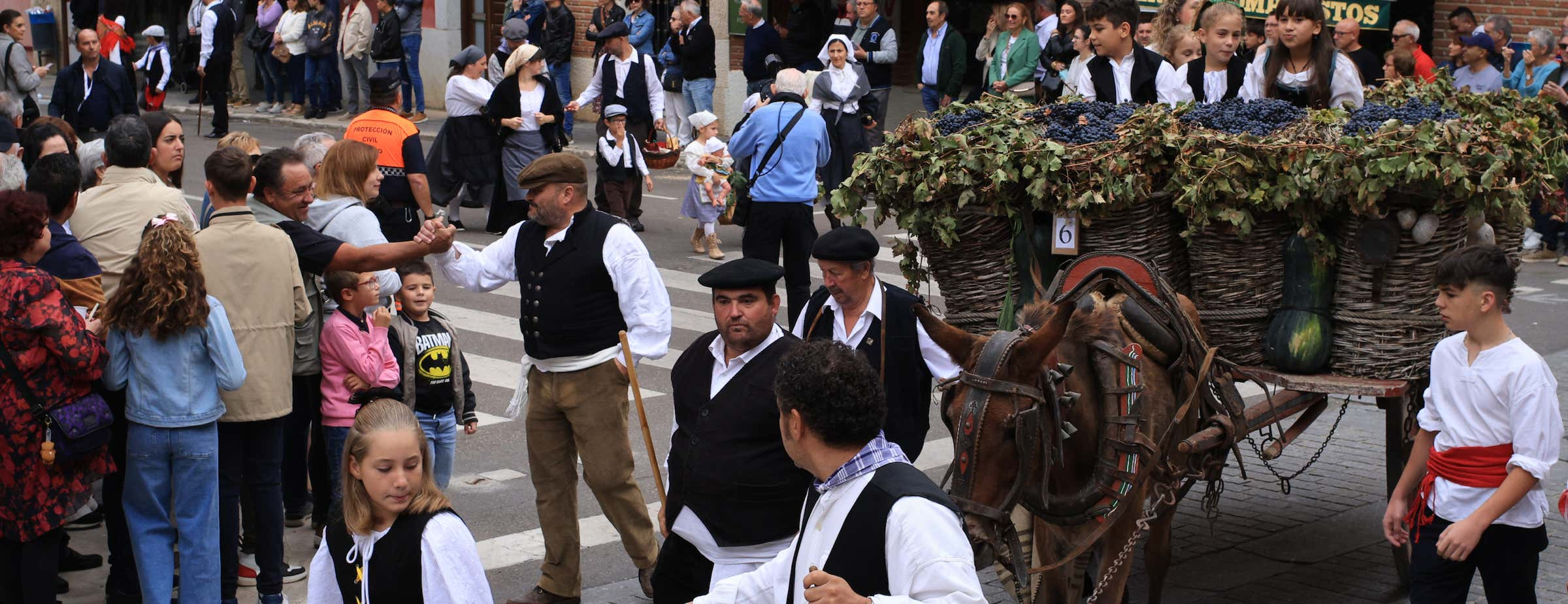Please click on the picture above to start the 360° panoramic tour. The tour consists of multiple locations. To navigate between locations, you can click the arrows pointing to the next location. At each location, you can change the viewpoint by either using the below buttons or click-and-drag. On the right hand-side, an information bar is available for each location giving general information and optional further details on specific shown elements.

Toro is a historical and monumental city. The city is a reflection of its notable historical role, of special relevance between the 12th and 16th centuries, in which it was the royal seat and venue for the Cortes. Its historic center is home to authentic monumental jewels, among which the Collegiate Church of Santa María la Mayor stands out.
Toro is a Spanish municipality in the province of Zamora, in the autonomous community of Castilla y León. It is located southeast in the province in the heart of Duero Valley.
The town of Toro is located southeast of the province of Zamora, in the heart of the Duero valley, about 33 km from the provincial capital. The total area of the municipal area is 324.86 km², a fact that places this municipality as the largest area in its province, occupying just over 3% of its territory.
Approximately 60 minutes
From spring to autumn.
2€ per person.
Toro bus station. Alba 4.
49800 Toro (Zamora) 980 69 00 62
Saturday: 12:00h. and 16:30h.
Rest of the days it opens on request.
Closed Sunday
C/ Cerrada, 2
49800 Toro, Zamora, Spain
https://www.turismotoro.com/index.php/es/toro-monumental/323-ruta-bodegas
Year of construction: 1652
Location: Toro, Spain
Type of place: Museum
the barrel of the vine
the underground tree
Tinto for Amerika
For centuries the Toro region has based its existence and well-being on the commercial activity derived from viticulture, vine cultivation, and wine production for over 1000 years. The red Tinto de Toro variety is the main and majority variety in the cultivated area with a unique character and flavour. Lots of Toro vineyards extensions survived in recent times a big European virus: the phylloxera. Today some of those vineyards still produce high-quality wine, and treasure a unique landscape of pre-phylloxera vines.
The uncountable underground cellars in Toro town preserve a lot of that popular culture. The cooperative historical wine cellar right in the middle of Toro - known as La Niña Bonita from 1652 - represents a climax of wine heritage, co-working tradition, history and technical architecture of the XVII century. It consists of several floors that follow one another on different levels, preserved in perfect condition.

In Toro, there are different accommodations, such as hotels and rural houses, and authentic wine-gastronomical experiences, promoted by tapas bars and restaurants. Several of the receptive options are members of the Toro Wine Route, which can be contacted for more information: https://www.rutavinotoro.com/en/toro-wine-route/
By car to Toro: from Zamora (West) it is about 40 km. Use motorway A-11. Follow to exit 425.
From Valladolid (East) it is about 80 km. Use motorway A-62 and then A-11. Follow to exit 425.
By train and national bus to Toro: You can take the high-speed train from Madrid to Valladolid (230 km) in 1 hour. From Valladolid to Toro it is recommended to go by bus departing from the bus station.
Local transport: If needed, you can ask for a taxi number at your accommodation for updated information.
It is advised to wear comfortable warm clothes and non-slipping shoes for the wet underground.
It is allowed to take photos without flash.
Collegiate Church of Santa María la Mayor is one of the main attractions in Toro and is a great addition to the expression of the wine culture and rural heritage in la Niña Bonita.
The Toro Wine Route extends through part of the Duero River basin, between the bordering areas of two provinces Zamora and Valladolid, which together add up to 14 towns, being Toro the most important among those, both historically and in number of inhabitants.
Only on a guided tour.
No discount can be applied.
It is. It is a unique and privileged place to be visited and discover the Toro wine culture.
No other place can best show the Toro wine heritage than the historic wineries, of whom La Niña Bonita is a precious representation.
The Toro Wine Route is an association created with the aim of linking the world of wine, specifically Toro wine, with history, heritage, tradition, and gastronomy.
It was born out of the concern of all people and small and medium-sized businesses, who feel the need to partner to create a route in which to offer personal, unique, rounded experiences that “leave their mark”.
These are balanced, alcoholic and slightly acidic wines. Its flavor stands out for wild fruits and an aroma of strawberries. That is why these Toro wines have become one of the most desired red wines in the world.
In specialized stores, wine bars, large stores, wineries, online sales, etc.
Funded by the European Union. Views and opinions expressed are however those of the author(s) only and do not necessarily reflect those of the European Union or the European Education and Culture Executive Agency (EACEA). Neither the European Union nor EACEA can be held responsible for them.